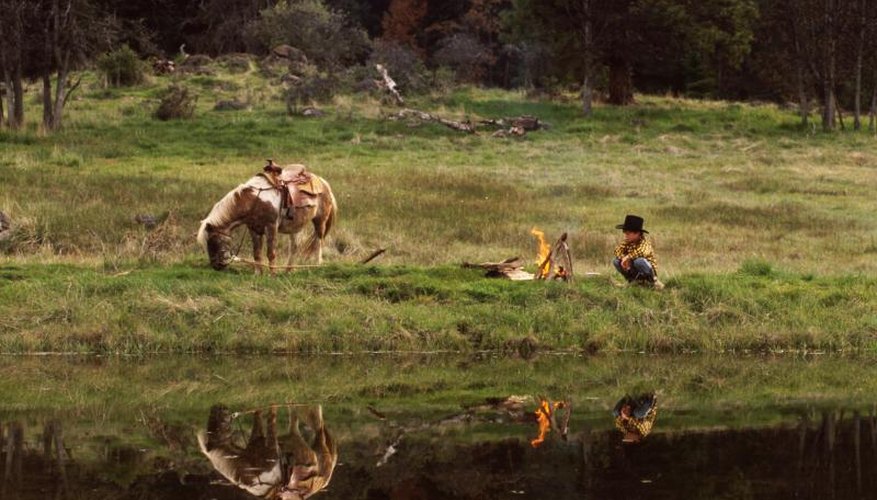
Bedrolls allow you to create a comfortable and dry sleeping unit on a camping trip when you plan to travel without a tent. Rather than placing your sleeping bag on the hard ground, bedrolls make use of an air or foam mattress and additional blankets to create a plush and comfortable bed. The bedding is then rolled up and secured by a rope or strap of leather, which makes it easy to carry while hiking or making your way to the next night’s camping grounds.
Items you will need
Groundsheet
Air or foam mattress
Two blankets
Sleeping bag
Small pillow
Rope
Step 1
Spread out the groundsheet flat on the ground. Typically made of a waterproof canvas or polyester material, the groundsheet protects your bed from a damp or moist ground. Use a groundsheet that is twice the width and length of your mattress.
Step 2
Place your air or foam mattress in the center of the groundsheet. Any size mattress may be used for a bedroll. Still, a smaller mattress, such as a twin size, will be easier to carry when hiking or transporting from one campsite to the next.
Step 3
Position the zippered sleeping bag lengthwise on the mattress. Lay each blanket on top of the sleeping bag. Blankets can be made of fleece or wool, depending on your personal preference. Fold large blankets in half vertically for a compact and tidy bedroll.
Step 4
Tuck a small pillow inside the top of the sleeping bag. Though you want to minimize your load, bringing a small pillow can allow for a more restful night’s sleep.
Step 5
Fold the side edges of the groundsheet over the top of the blankets. Roll up the entire bed, keeping the mattress, sleeping bag, blankets and groundsheet intact, from head to foot.
Step 6
Fasten the bedroll with three pieces of rope, two around the roll toward each end and another lengthwise, which can be used as a handle. Tie the rope with slipknots, which allows the bedroll to be secure. When you untie and open the roll at night, your bed should be intact and ready for sleeping.
Warnings
- Practice assembling and carrying your bedroll at home before your camping trip to make sure it is light enough for you.
Tips
- Adjust your bedroll according to the weather. Warmer temperatures may allow for one or possibly even no blankets, which can help to lighten the weight of the bedroll. Alternatively, colder weather may require more than two blankets.
References
Tips
- Adjust your bedroll according to the weather. Warmer temperatures may allow for one or possibly even no blankets, which can help to lighten the weight of the bedroll. Alternatively, colder weather may require more than two blankets.
Warnings
- Practice assembling and carrying your bedroll at home before your camping trip to make sure it is light enough for you.
Writer Bio
Based on the west coast, Beth Rifkin specializes in business, food, cooking, family, lifestyle and health issues. Her work has appeared in numerous on and offline publications. Beth earned a Bachelor of Business Administration from Temple University.



